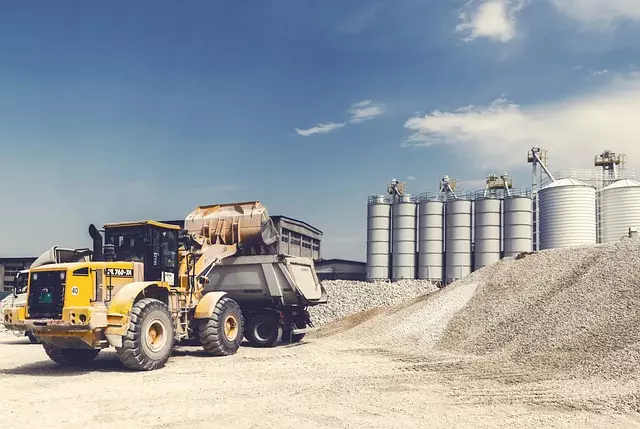In designing safe and productive workstations, industrial hygiene is paramount. It involves identifying and assessing hazards like noise, chemicals, and ergonomic issues through regular inspections and expert consultation. Exposure monitoring tracks hazardous levels, ensuring safety standards are met. Ergonomic design reduces strain, while case studies show robust hygiene practices lead to safer, more efficient operations. The future includes smart workstations with AI-driven monitoring and VR for immersive training, revolutionizing industrial hygiene and worker safety.
Workstation design goes beyond aesthetics; it’s a critical component of occupational health and safety. Understanding industrial hygiene forms the foundation, ensuring workplaces are designed to prevent diseases and injuries. This article guides you through essential steps, from identifying hazards and assessing risks to implementing ergonomic considerations. We explore exposure monitoring tools, successful case studies, and future trends driven by technology, offering a comprehensive resource for creating safe and productive workspaces. Key SEO keywords—industrial hygiene, hazard recognition and assessment, and exposure monitoring—are seamlessly integrated throughout.
- Understanding Industrial Hygiene: The Foundation of Workstation Design
- Identifying Hazards: A Step-by-Step Guide for Safe Workspaces
- Risk Assessment: Quantifying Potential Dangers in the Workplace
- Monitoring Exposure: Tools and Techniques for Safety Professionals
- Ergonomic Considerations: Creating a Comfortable and Productive Environment
- Case Studies: Successful Implementation of Hygiene and Safety Measures
- Future Trends: Tech-Driven Solutions for Workstation Design
Understanding Industrial Hygiene: The Foundation of Workstation Design
Understanding Industrial Hygiene is the cornerstone upon which effective workstation design rests. It involves identifying and assessing potential hazards in the work environment to minimize exposure and ensure worker safety. By employing principles of industrial hygiene, designers can create workstations that optimize productivity while mitigating risks associated with various factors like ergonomics, chemical exposure, noise levels, and lighting conditions.
Hazard recognition and assessment is a critical first step, where professionals identify sources of potential harm within the workplace. This includes evaluating tasks, tools, materials, and environmental conditions to determine the extent of exposure workers might have to hazardous substances or stressful ergonomic factors. Subsequent exposure monitoring ensures that control measures are in place and effective, tracking levels of hazards like noise, chemicals, or repetitive motion stresses to confirm compliance with safety standards and maintain worker well-being.
Identifying Hazards: A Step-by-Step Guide for Safe Workspaces
Identifying potential hazards in a workspace is a critical step in ensuring worker safety and promoting industrial hygiene. The process begins with a thorough assessment of the work environment, considering every element that could pose a risk to employees. This includes examining equipment, materials, and even the physical layout of the space. By taking a systematic approach, employers can uncover various hazards such as noise exposure, chemical risks, or ergonomic issues.
A step-by-step guide for hazard recognition and assessment may involve conducting regular inspections, consulting with experts, and gathering feedback from workers. During inspections, pay attention to air quality, lighting, temperature, and the presence of any toxic substances. Engage employees in this process as they are often the best judges of their work environment’s potential dangers. Exposure monitoring should be conducted periodically to measure and assess worker exposure to harmful elements, ensuring compliance with safety standards and regulations.
Risk Assessment: Quantifying Potential Dangers in the Workplace
In the context of workstation design, a comprehensive risk assessment is paramount to ensuring worker safety and health. Industrial hygiene experts emphasize that quantifying potential dangers in the workplace involves systematic hazard recognition and assessment. By meticulously evaluating various aspects of the work environment, from chemical exposures to ergonomic stressors, employers can identify risks specific to each job task or area. This process not only identifies hazards but also helps prioritize them based on severity and likelihood of occurrence.
Exposure monitoring plays a crucial role in this evaluation. It involves measuring levels of hazardous substances in the air, such as chemicals, dusts, or noise, to determine if they exceed safe limits. This data is instrumental in designing workstations that minimize exposure, implementing engineering controls, providing personal protective equipment (PPE), and establishing appropriate training programs. Regular review and update of risk assessments are essential to adapt to changing work conditions and new scientific findings related to industrial hygiene.
Monitoring Exposure: Tools and Techniques for Safety Professionals
In the realm of workstation design, especially in industrial settings, monitoring exposure is paramount for ensuring worker safety and health, a core principle of industrial hygiene. Safety professionals employ various tools and techniques to conduct thorough hazard recognition and assessment, which forms the foundation for effective exposure monitoring. This involves identifying potential risks within the work environment and evaluating how employees might come into contact with these hazards.
For instance, personal sampling methods can be used to directly measure an employee’s exposure levels to airborne contaminants. These include portable devices that collect samples over specified periods, providing real-time data for immediate action. Additionally, fixed monitoring stations strategically placed around the workstation offer continuous data collection, enabling trends and patterns in exposure to be identified over time. Such proactive measures not only safeguard workers but also serve as valuable insights for implementing control measures to mitigate risks through ergonomic design adjustments or process modifications.
Ergonomic Considerations: Creating a Comfortable and Productive Environment
Ergonomic considerations play a pivotal role in workstation design, shaping the comfort and productivity of users. A well-designed workspace should minimize physical strain by promoting correct posture during various tasks. This involves incorporating adjustable elements like height-adjustable desks and chairs to cater to different user preferences and body types. Additionally, proper placement of screens, keyboards, and mice reduces eye strain and repetitive motion injuries.
In the context of industrial hygiene, hazard recognition and assessment are crucial steps. Employers must identify potential risks associated with workstations, such as prolonged exposure to vibration or awkward postures. Regular exposure monitoring helps track these hazards and ensures compliance with safety standards. By implementing ergonomic principles and maintaining a safe work environment through regular assessments, organizations can foster a healthier workforce and boost overall productivity.
Case Studies: Successful Implementation of Hygiene and Safety Measures
In the context of workstation design, particularly in industrial settings, the successful implementation of hygiene and safety measures plays a pivotal role. Case studies from leading manufacturing plants have shown that adopting robust practices in industrial hygiene can significantly enhance worker well-being and productivity. These implementations often start with thorough hazard recognition and assessment, where potential risks are identified and categorized based on their severity and likelihood. This process involves regular inspections, employee feedback, and data analysis to ensure every aspect of the workplace is evaluated.
Once hazards are recognized, effective strategies for exposure monitoring and control are put in place. This includes implementing engineering controls such as improved ventilation systems, automatic equipment, and safe work procedures. Additionally, personal protective equipment (PPE) is provided and properly utilized to mitigate risks where engineering controls are insufficient. These measures not only protect workers from various health issues but also foster a culture of safety, leading to more efficient and sustainable operations in the long run.
Future Trends: Tech-Driven Solutions for Workstation Design
The future of workstation design is being reshaped by technological advancements, prioritizing ergonomic efficiency and worker safety. Smart workstations are increasingly integrating sensors and AI to monitor environmental factors like lighting, temperature, and air quality in real-time, ensuring optimal conditions for employee comfort and productivity. These tech-driven solutions also play a pivotal role in industrial hygiene, as they can automate hazard recognition and assessment processes. By analyzing data from exposure monitoring systems, workstations of tomorrow will proactively identify potential risks and adjust settings to minimize them, creating safer work environments.
Moreover, virtual and augmented reality technologies are expected to transform workstation design by enabling immersive training simulations and dynamic workspace arrangements. This not only enhances skill development but also allows for more flexible and personalized workstations that adapt to individual needs. As organizations embrace these trends, they’ll be better equipped to foster a culture of safety and efficiency, ensuring their workspaces remain competitive and compliant with evolving health and safety standards.


